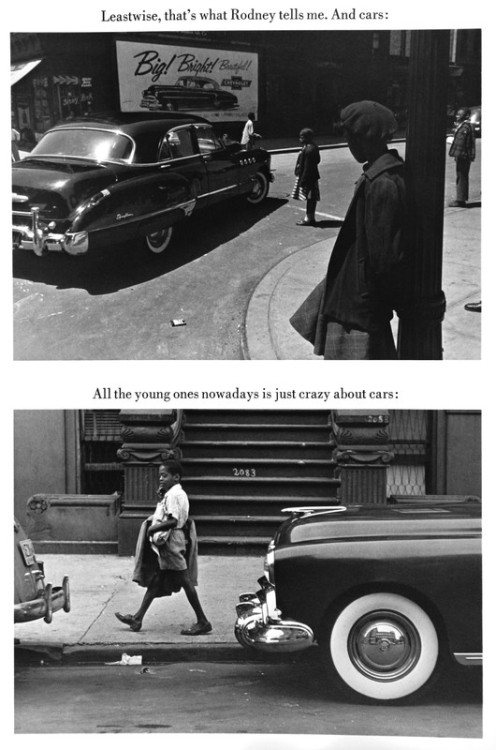Sweet Flypaper of Life: 1950s Harlem in Black & White
by darkjive ...
darkjive

Picture it. I’m in high school, late for the morning bus, desperate for something to read during my lengthy commute. On my Grandmother’s disheveled porch, I find a slightly sunfaded paperback. The book is Sweet Flypaper of Life, with text by Langston Hughes and photography by Roy DeCarava (1955). I toss it in my backpack, completely unaware that:
1. My life would never be the same… I would see the world differently from that day on.
2. That paperback was (at the time) thirty years old and worth nearly 100 bucks. I would only discover its value when I attempted in college to upgrade for a hardcover. Apparently, it’s an exceptionally rare book. And I threw it in my backpack. Did I mention it rained that day?
About the book:
Essentially, the Sweet Flypaper is written from the point of view of an older woman in Harlem who is a fixture in her community. She introduces us to each person in her world. We’re let in on their struggles as well as the hard-fought victories in their lives. The Langston Hughes’ text is accompanied by a memorable photo essay by Roy DeCarava.
 How I love this book. It captures a time on the cusp of the Civil Rights Era: a time steeped in the Electrified Delta Blues, in Joe Louis Fights, in Dinah Washington and Sarah Vaughn, in Miller High Life, in Dixie Peach pomade. It captures something so timeless that it stays with you…. always. I recommend you discover a copy of your own, but until you do, enjoy the pages I reproduced here for you. Jive on!
How I love this book. It captures a time on the cusp of the Civil Rights Era: a time steeped in the Electrified Delta Blues, in Joe Louis Fights, in Dinah Washington and Sarah Vaughn, in Miller High Life, in Dixie Peach pomade. It captures something so timeless that it stays with you…. always. I recommend you discover a copy of your own, but until you do, enjoy the pages I reproduced here for you. Jive on!

In The Photobook: A History, Vol. I Martin Parr and Gerry Badger explain that as the reformist drive of much documentary work began to diminish, supplanted by a more "personal kind of expression," many photographers "rejected the close marriage of image and text that characterized the 1930s documentary photobook. Photography became more overtly elliptical, playing deliberately on the mediums's ambiguities...Sweet Flypaper was published not as an out-and-out social documentary book, but with DeCarava's 'real life' images illustrating a fictional text by Hughes about life in Harlem...The most significant feature of The Sweet Flypaper of Life (apart from its great title) is not its indeterminate status as fact, fiction, or even 'faction', but that a leading mainstream publisher took the chance of publishing a view of a minority community from the 'inside'."














Geen opmerkingen:
Een reactie posten